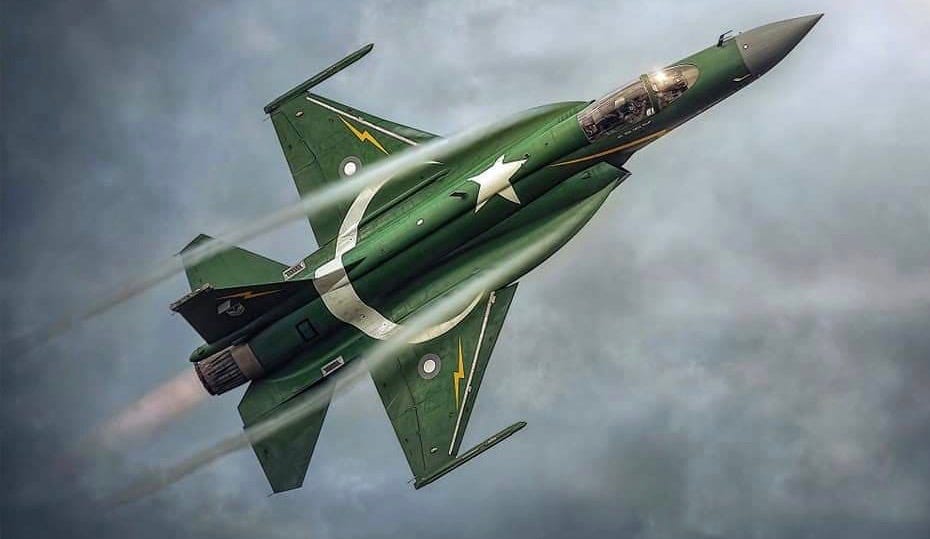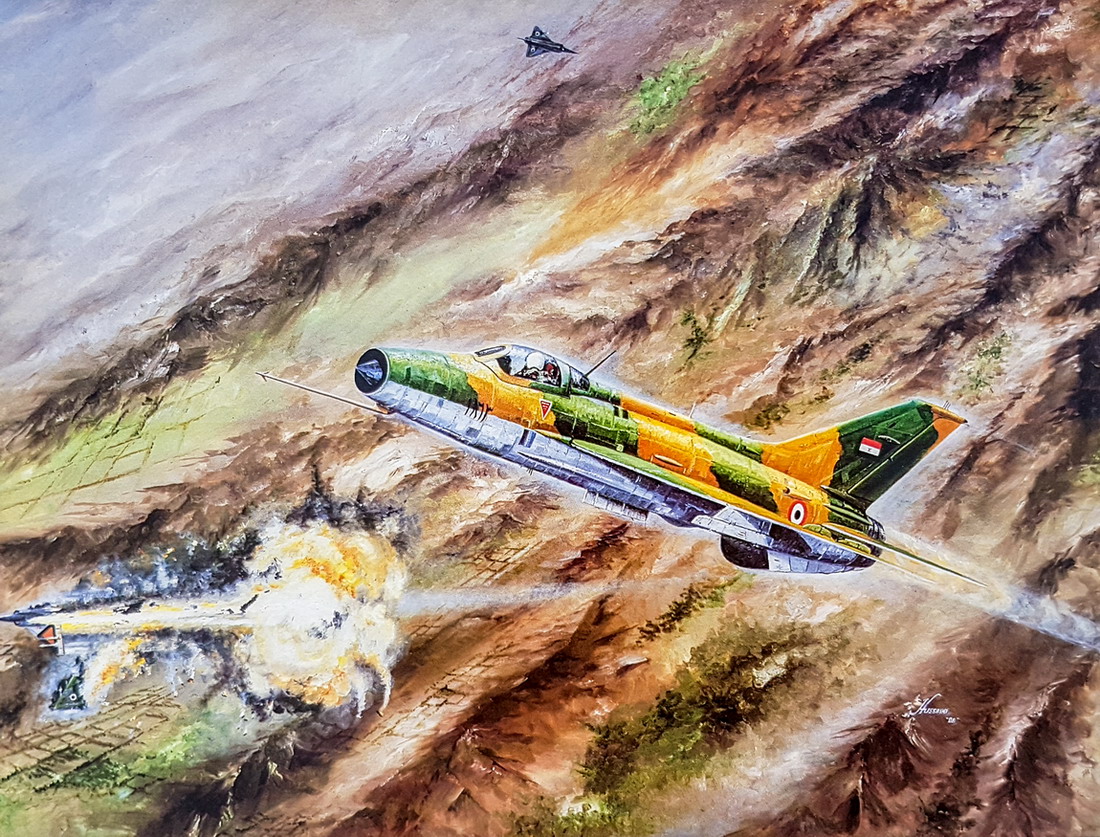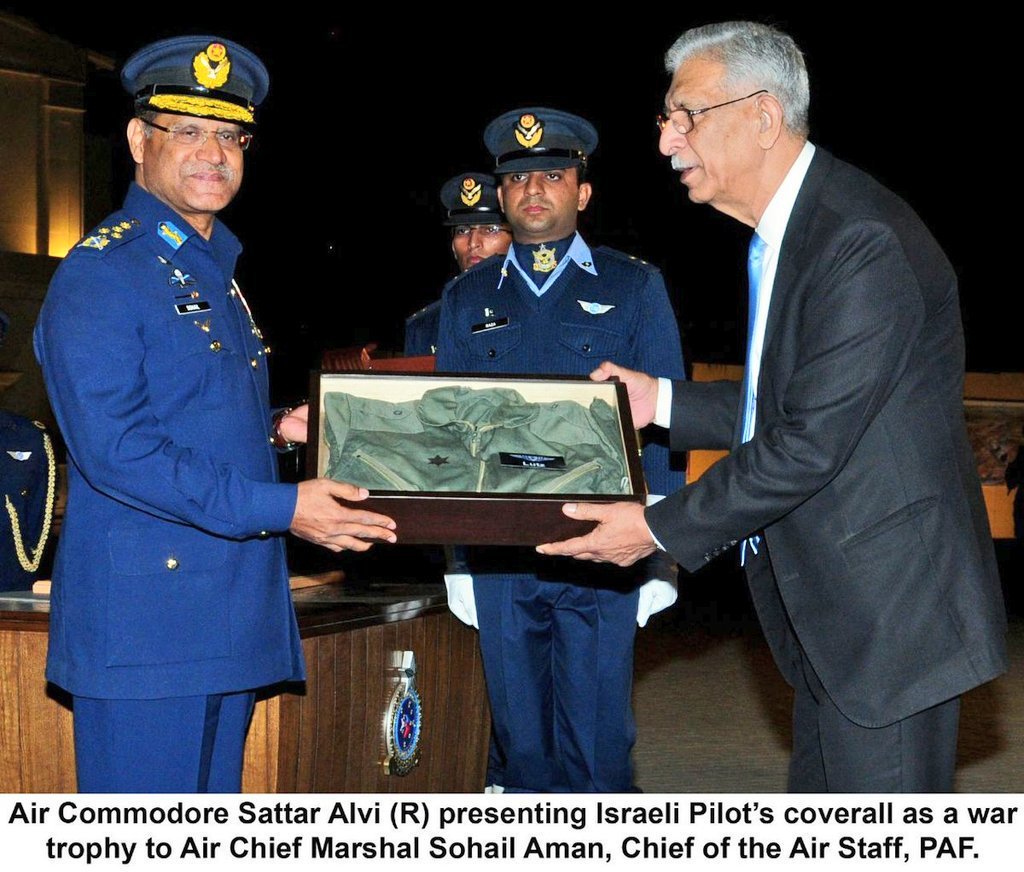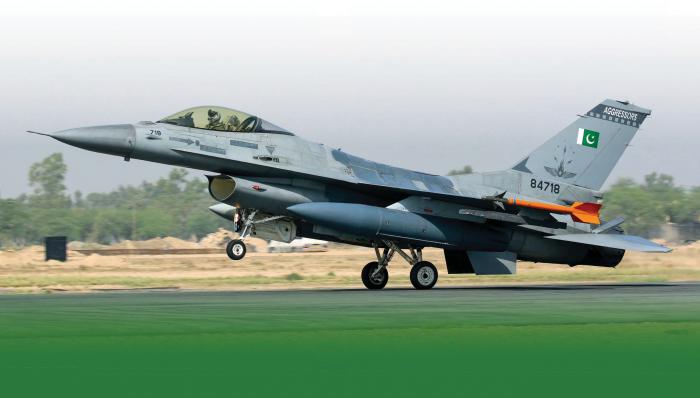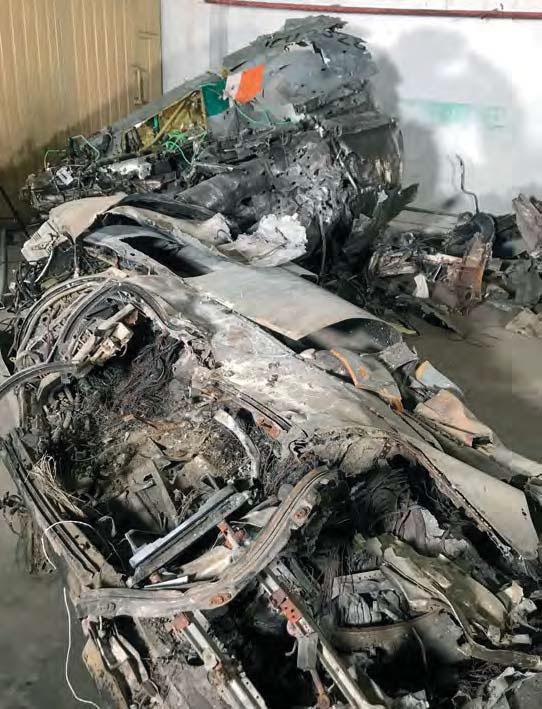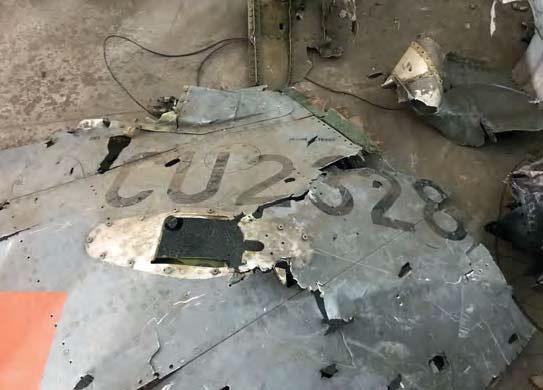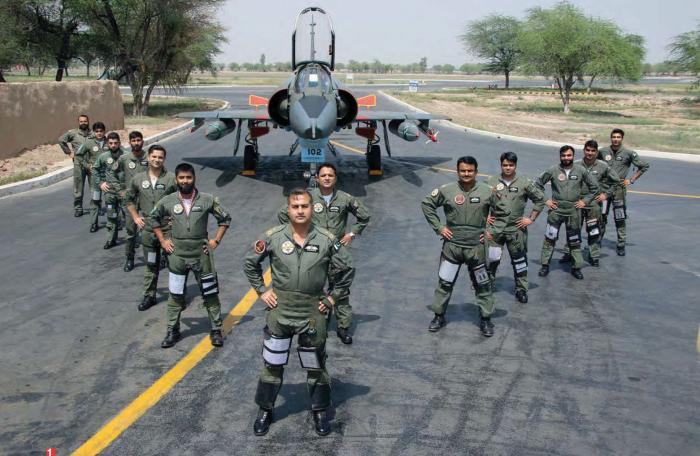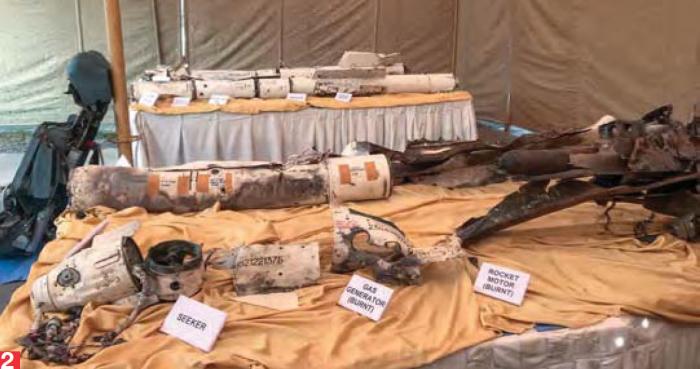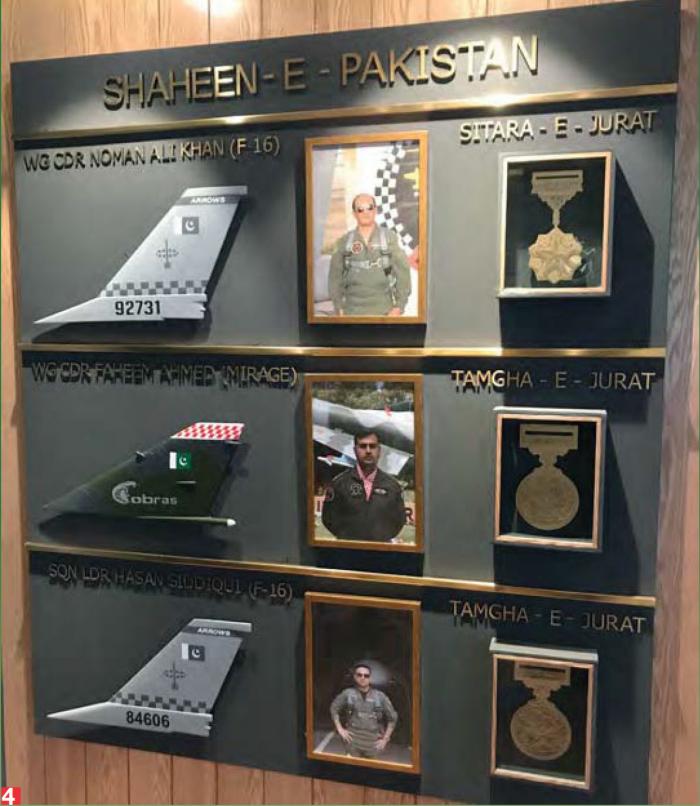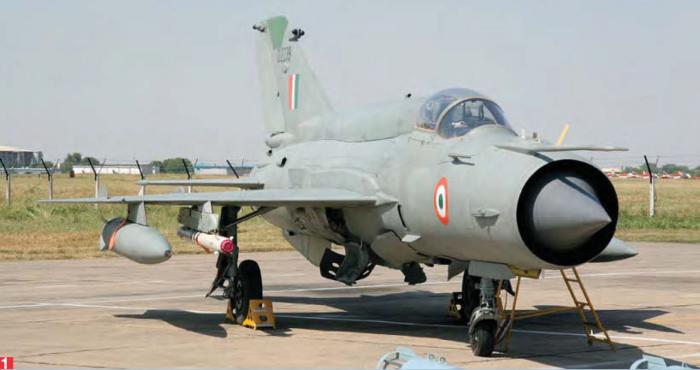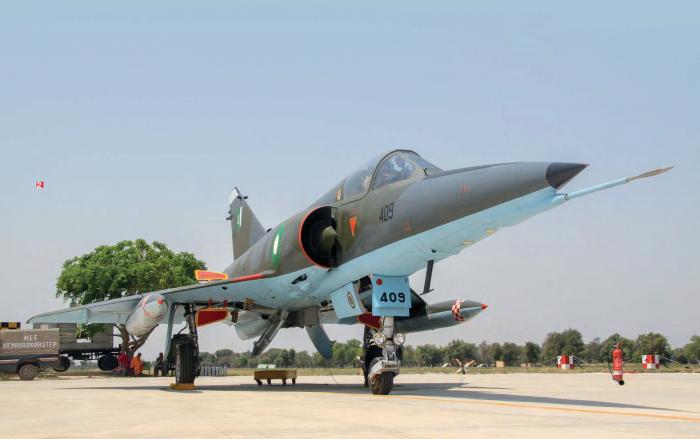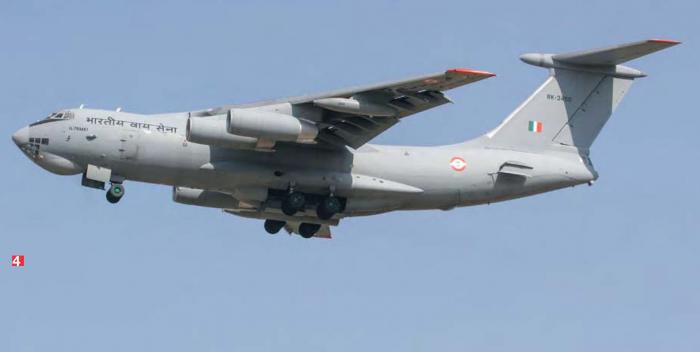Fatman17
THINK TANK: CONSULTANT
- Apr 24, 2007
- 36,889
- 43,258
- Country of Origin

- Country of Residence


Home :: Military :: World :: China :: Aircraft :: Jianjiji / Fighter :: J-7 (Jianjiji-7) ::
Military
F-7P Sabre II "Super 7" (Chao Qi)
The Super-7 is a development of the F-7, Chengdu's version of the Mikoyan MiG-21 Fishbed. The upgraded F-7M was to be offered for export by China as a lowcost, new-build replacement for the US-built Northrop F-5, the Soviet MiG-21, and the Chinese F-6 and F-7.By the early 1980s the PAF was looking for a new fighter to replace the F-6 [Chinese J-6]. Pakistan initiated the Sabre II project which would upgrade the Chengdu F-7M Skybolt with a Western engine and avionics. The early 1980s was characterized by a pronounced improvement in US-Chinese relations. It was therefore only natural that China became a major market for Western military hardware, in contrast to the years following China's 1949 Communist revolution, when an economic embargo imposed by the West forced China to seek assistance from the Soviet Union.
Grumman and China studied the feasibility of producing substantially improved F-7s using US engines and avionics. The extensively modified version of China's F-7 (MiG-21) fighter, called the Sabre II, would be re-engined and given a new forward fuselage with "solid" nose and side intakes. The new plane was deep modernization of J-7 fighter. The Sabre II was an F-7 with a General Electric F404 or Pratt & Whitney PW1216 or PW1120 engine producing between 16,0001b and 20,0001b thrust. The aircraft was equipped with the Westinghouse AN/APG-66 radar (the same as on the F-16 fighter. According to Chinese experts, the combat capabilities of the aircraft "Super 7" must have been closer to the American F-16 fighter.
The "SUPER-7" was the first fighter jet completely designed and manufactured by China. Super-7 (Chao Qi) fighter was a new generation fighter and the first of its kind of China's own intellectual property rights. The third-generation fighter plane, which can carry 3.8 tons of missiles, also has improved systems for attacking ground targets. Its advanced radar positioning and operating systems give the plane greater flexibility and better close-range manoeuvrability.
The wing area would be enlarged by increasing span (from 23.5ft to 26ft) and chord. Leading-edge slats and combat flaps would be fitted. Two additional hardpoints would be incorporated for Sidewinder-class air-to-air missiles. The higher thrust and lower wing loading would increase manuverability, while the longer fuselage (stretched from 45.8ft to 49.3ft) would give an 1,1001b increase in fuel capacity and single-point refuelling. The extra fuel and more-efficient turbofan would enhance range and endurance. The main landing gear would be beefed up, and larger wheels fitted. The nose gear would also be redesigned, and would incorporate nosewheel steering. An arrester hook would be fitted, and the ventral strake would be reshaped. The cockpit would be changed completely, with a Northrop F-20 Tigershark windscreen and canopy, F-16-type displays and instrumentation, and a new ejection seat. The gaseous oxygen system would be replaced by a higher-capacity liquid oxygen system.
The program was partially funded by Pakistan, which was considered as the main potential customer. The fighter was offered as a low-cost alternative to the F-16 to meet Pakistan's 150-aircraft requirement to replace Chinese-supplied F-6s (MiG-19s). The flyaway cost will be $8-9 million.
Grumman completed a five-month feasibility study in 1987. The American firm had performed preliminary studies and wind tunnel aircraft models. Grumman, China's Chengdu aircraft factory, China Aero Technology Import-Export Company, the Pakistan Air Force and the Pakistan Aeronautical Complex (PAC) promoted the F-7 modification. Chengdu would build the revised rear fuselage to a Grumman design, while the US company would build the new forward fuselage. PAC would assemble the aircraft. Several other Western companies were in competition to supply the engine and avionics.
In November 1988 Grumman and the China National Aero Technology Import-Export Corporation (Catic) started a nine month preliminary design study to upgrade Chinese-built Xian F-7M Airguard (MiG-21) fighter/ ground-attack aircraft. But by 1988 Grumman doubted that its proposal will be accepted, but believed that China could become interested in the modified F-7 for its own use.
The joint program to produce the Super 7 fighter was delayed in part because of resource constraints which prevented Beijing from meeting the project's initial R&D costs. Within a few years, project costs had escalated, and by 1989 the program was regarded as posing high financial risk by the PAF, given the 40% increase in the cost of the project. Chinese relations with the West broke down following the suppression of the Tiananmen Square protests in June 1989. Consequently, the "Sabre II" project was cancelled.
In the meantime the US lost interest in Pakistan following the Soviet withdrawal from Afghanistan. The US suddenly focused on Pakistan's nuclear weapons development program, and in 1990 the US imposed military and economic sanctions in the Pressler amendments. Development of the "Super 7" upgrade was slowed with the end of American technical assistance following the Tienanmen repression of 1989. The PAF opted for a less ambitious option of acquiring the F-7P Skybolt, an upgraded version of the F-7M, to support the fleet of F-7P Skybolts with over a 100 F-16 Fighting Falcons.
By 1993 Saturn's AL-31F, which powers the Sukhoi Su-27 Flanker, had been selected to power the Chinese Chengdu Super-7, which was due to be flown in 1994. The Super-7 was to have been powered by the General Electric F404, but use of the engine was blocked by a US trade embargo. The Russian powerplant was selected over the Turbo-Union marketed by Rolls-Royce. By 1995 Moscow was willing to assist with a number of Chinese programs, including the Super-7 fighter plane. But even with Russia's help, this aircraft ws not scheduled for delivery until the latter part of the 1990s. Pakistan and China later foreclosed the option of producing F-Super 7 aircraft due to non-availability of engines. However, Chengdu continued it efforts to improve the F-7M airframe by re-designing air intakes on the sides of the fuselage, hence the name Super-7.
NEWSLETTER |
| Join the GlobalSecurity.org mailing list |
Advertise with Us | About Us | Site Map | Privacy

